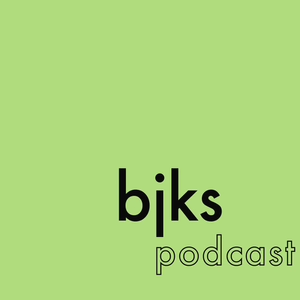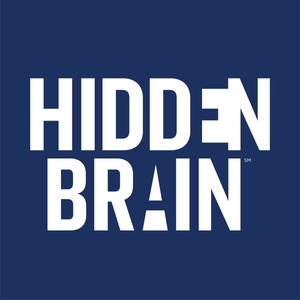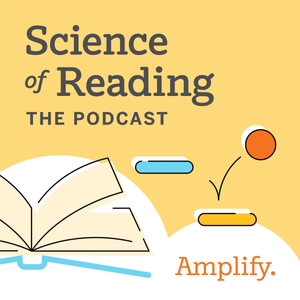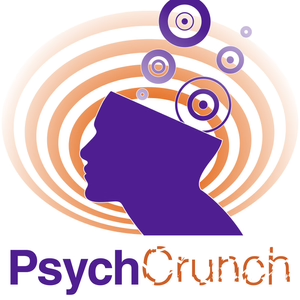
88. Juliana Schroeder: Talking to strangers, undersociality, and replicable field studies
01/05/24 • 62 min
Juliana Schroder is a professor at the UC Berkeley Haas School of Business. In this conversation, we talk about her research in which she asks people to talk to strangers, and how this experience is usually a lot more pleasant than people expect. We talk about how the research came to be, what they found, how culture and norms affect the results, how to create robust and replicable field studies, and much more.
BJKS Podcast is a podcast about neuroscience, psychology, and anything vaguely related, hosted by Benjamin James Kuper-Smith.
Support the show: https://geni.us/bjks-patreon
Timestamps
00:00: The origin of Juliana's studies on talking to strangers
02:15: Why don't people talk to strangers (during commutes)?
05:46: What happens when strangers are forced to talk to each other?
08:47: How to start a conversation
13:31: Cultural differences in talking to strangers
31:19: How to create robust and replicable field studies
48:04: What's next for this line of research?
54:14: A book or paper more people should read
55:26: Something Juliana wishes she'd learnt sooner
57:13: Advice for PhD students/postdocs
Podcast links
- Website: https://geni.us/bjks-pod
- Twitter: https://geni.us/bjks-pod-twt
Juliana's links
- Website: https://geni.us/schroeder-web
- Google Scholar: https://geni.us/schroeder-scholar
- Twitter: https://geni.us/schroeder-twt
Ben's links
- Website: https://geni.us/bjks-web
- Google Scholar: https://geni.us/bjks-scholar
- Twitter: https://geni.us/bjks-twt
References
Boothby, Cooney, Sandstrom & Clark (2018). The liking gap in conversations: Do people like us more than we think? Psychological Science.
Epley (2015). Mindwise: Why we misunderstand what others think, believe, feel, and want.
Epley, Kardas, Zhao, Atir & Schroeder (2022). Undersociality: Miscalibrated social cognition can inhibit social connection. Trends in Cognitive Sciences.
Epley & Schroeder (2014). Mistakenly seeking solitude. Journal of Experimental Psychology: General.
Kardas, Schroeder & O'Brien (2022). Keep talking: (Mis) understanding the hedonic trajectory of conversation. Journal of Personality and Social Psychology.
Roy (1997). The god of small things.
Sandstrom, Boothby & Cooney (2022). Talking to strangers: A week-long intervention reduces psychological barriers to social connection. Journal of Experimental Social Psychology.
Sandstrom & Boothby (2021). Why do people avoid talking to strangers? A mini meta-analysis of predicted fears and actual experiences talking to a stranger. Self and Identity.
Schroeder, Lyons & Epley (2022). Hello, stranger? Pleasant conversations are preceded by concerns about starting one. Journal of Experimental Psychology: General.
Juliana Schroder is a professor at the UC Berkeley Haas School of Business. In this conversation, we talk about her research in which she asks people to talk to strangers, and how this experience is usually a lot more pleasant than people expect. We talk about how the research came to be, what they found, how culture and norms affect the results, how to create robust and replicable field studies, and much more.
BJKS Podcast is a podcast about neuroscience, psychology, and anything vaguely related, hosted by Benjamin James Kuper-Smith.
Support the show: https://geni.us/bjks-patreon
Timestamps
00:00: The origin of Juliana's studies on talking to strangers
02:15: Why don't people talk to strangers (during commutes)?
05:46: What happens when strangers are forced to talk to each other?
08:47: How to start a conversation
13:31: Cultural differences in talking to strangers
31:19: How to create robust and replicable field studies
48:04: What's next for this line of research?
54:14: A book or paper more people should read
55:26: Something Juliana wishes she'd learnt sooner
57:13: Advice for PhD students/postdocs
Podcast links
- Website: https://geni.us/bjks-pod
- Twitter: https://geni.us/bjks-pod-twt
Juliana's links
- Website: https://geni.us/schroeder-web
- Google Scholar: https://geni.us/schroeder-scholar
- Twitter: https://geni.us/schroeder-twt
Ben's links
- Website: https://geni.us/bjks-web
- Google Scholar: https://geni.us/bjks-scholar
- Twitter: https://geni.us/bjks-twt
References
Boothby, Cooney, Sandstrom & Clark (2018). The liking gap in conversations: Do people like us more than we think? Psychological Science.
Epley (2015). Mindwise: Why we misunderstand what others think, believe, feel, and want.
Epley, Kardas, Zhao, Atir & Schroeder (2022). Undersociality: Miscalibrated social cognition can inhibit social connection. Trends in Cognitive Sciences.
Epley & Schroeder (2014). Mistakenly seeking solitude. Journal of Experimental Psychology: General.
Kardas, Schroeder & O'Brien (2022). Keep talking: (Mis) understanding the hedonic trajectory of conversation. Journal of Personality and Social Psychology.
Roy (1997). The god of small things.
Sandstrom, Boothby & Cooney (2022). Talking to strangers: A week-long intervention reduces psychological barriers to social connection. Journal of Experimental Social Psychology.
Sandstrom & Boothby (2021). Why do people avoid talking to strangers? A mini meta-analysis of predicted fears and actual experiences talking to a stranger. Self and Identity.
Schroeder, Lyons & Epley (2022). Hello, stranger? Pleasant conversations are preceded by concerns about starting one. Journal of Experimental Psychology: General.
Previous Episode

87. Rick Betzel: Network neuroscience, generative modeling, and collaborations
Rick Betzel is an Associate professor at India University Bloomington. We talk about his research on network neuroscience, how to find good collaborators, Rick's path to network neuroscience, and much more.
Support the show: https://geni.us/bjks-patreon
Timestamps
0:00:00: What's the purpose of connectomics if understanding a species' entire connectome (as in C elegans) doesn't allow us to fully understand its behaviour?
0:03:57: Rick's very very linear path to network neuroscience
0:19:41: Multi-scale brain networks
0:43:40: Collaborations (between people who collect data and people who analyse data)
0:52:33: The future of network neuroscience: generative modeling, network control, and edge-centric connectomics
1:13:15: A book or paper more people should read
1:15:55: Something Rick wishes he'd learnt sooner
1:18:01: Advice for PhD students/postdocs
Podcast links
- Website: https://geni.us/bjks-pod
- Twitter: https://geni.us/bjks-pod-twt
Rick's links
- Website: https://geni.us/betzel-web
- Google Scholar: https://geni.us/betzel-scholar
- Twitter: https://geni.us/betzel-twt
Ben's links
- Website: https://geni.us/bjks-web
- Google Scholar: https://geni.us/bjks-scholar
- Twitter: https://geni.us/bjks-twt
References
Akarca ... (2021). A generative network model of neurodevelopmental diversity in structural brain organization. Nat Comm.
Barabási (2003). Linked.
Barabási & Albert (1999). Emergence of scaling in random networks. Science.
Betzel (2022). Network neuroscience and the connectomics revolution. In Connectomic deep brain stimulation.
Betzel & Bassett (2017). Multi-scale brain networks. Neuroimage.
Betzel & Bassett (2017). Generative models for network neuroscience: prospects and promise. Journal of The Royal Society Interface.
Betzel ... (2012). Synchronization dynamics and evidence for a repertoire of network states in resting EEG. Front comp neuro.
Bullmore & Sporns (2009). Complex brain networks: graph theoretical analysis of structural and functional systems. Nat Rev Neuro.
Cook ... (2019). Whole-animal connectomes of both Caenorhabditis elegans sexes. Nature.
Feltner & Dapena (1986). Dynamics of the shoulder and elbow joints of the throwing arm during a baseball pitch. J Appl Biomech.
Lindsay (2021). Models of the mind.
Nieminen ... (2022). Multi-locus transcranial magnetic stimulation system for electronically targeted brain stimulation. Brain stimulation.
Oh ... (2014). A mesoscale connectome of the mouse brain. Nature.
Rubinov & Sporns (2010). Complex network measures of brain connectivity: uses and interpretations. Neuroimage.
Scheffer ... (2020). A connectome and analysis of the adult Drosophila central brain. Elife.
Sporns (2016). Networks of the Brain.
Van Den Heuvel & Sporns (2011). Rich-club organization of the human connectome. J Neuro.
Watts & Strogatz (1998). Collective dynamics of ‘small-world’networks. Nature.
White ... (1986). The structure of the nervous system of the nematode Caenorhabditis elegans. Philos Trans R Soc Lond B.
Winding ... (2023). The connectome of an insect brain. Science.
Yan ... (2017). Network control principles predict neuron function in the Caenorhabditis elegans connectome. Nature.
Next Episode

89. Camillo Padoa-Schioppa: Value in the brain, orbitofrontal cortex, and causality in neuroscience
Camillo Padoa-Schioppa is a Professor of Neuroscience at the Washington University School of Medicine in St. Louis. In this conversation, we talk about Camillo's work on economic values in the brain, whether it is causally involved in choice, Camillo's career, working with different species, and much more.
BJKS Podcast is a podcast about neuroscience, psychology, and anything vaguely related, hosted by Benjamin James Kuper-Smith.
Support the show: https://geni.us/bjks-patreon
Timestamps
0:00:00: The historic background of economic value
0:12:31: How Camillo became a neuroeconomist
0:38:50: What does neuroscience add to our understanding of behaviour?
0:47:52: Value in the brain / discussing Camillo's 2006 Nature paper
1:05:47: Does the brain even need to compute value?
1:11:59: Causality in neuroscience / discussing Camillo's 2020 Nature paper
1:27:19: Trivial decisions
1:31:26: Is it wise to do neuroscience in humans and in animals, or should I focus on one approach?
1:40:15: A book or paper more people should read
1:43:19: Something Camillo wishes he'd learnt sooner
1:45:53: Advice for PhD students/postdocs
Podcast links
- Website: https://geni.us/bjks-pod
- Twitter: https://geni.us/bjks-pod-twt
Camillo's links
- Website: https://geni.us/padoa-schioppa-web
- Google Scholar: https://geni.us/padoa-schioppa-scholar
- Twitter: https://geni.us/padoa-schioppa-twt
Ben's links
- Website: https://geni.us/bjks-web
- Google Scholar: https://geni.us/bjks-scholar
- Twitter: https://geni.us/bjks-twt
References
Ballesta ... & Padoa-Schioppa (2020). Values encoded in orbitofrontal cortex are causally related to economic choices. Nature.
Bentham (1780). An introduction to the principles of morals and legislation.
Gigerenzer & Gaissmaier (2011). Heuristic decision making. Annual review of psychology.
Hayden & Niv (2021). The case against economic values in the orbitofrontal cortex (or anywhere else in the brain). Behavioral Neuroscience.
Homer. Iliad.
Homer. Odyssey.
Padoa-Schioppa (2009). Range-adapting representation of economic value in the orbitofrontal cortex. Journal of Neuroscience.
Padoa-Schioppa (2011). Neurobiology of economic choice: a good-based model. Annual review of neuroscience.
Padoa-Schioppa & Assad (2006). Neurons in the orbitofrontal cortex encode economic value. Nature.
Padoa-Schioppa & Conen (2017). Orbitofrontal cortex: a neural circuit for economic decisions. Neuron.
Padoa-Schioppa ... & Visalberghi (2006). Multi-stage mental process for economic choice in capuchins. Cognition.
Padoa-Schioppa, Li & Bizzi (2002). Neuronal correlates of kinematics-to-dynamics transformation in the supplementary motor area. Neuron.
Smith (1759). The theory of moral sentiments.
Salzman ... & Newsome (1990). Cortical microstimulation influences perceptual judgements of motion direction. Nature.
Salzman ... & Newsome (1992). Microstimulation in visual area MT: effects on direction discrimination performance. Journal of Neuroscience.
Visalberghi & Trinca (1989). Tool use in capuchin monkeys: Distinguishing between performing and understanding. Primates.
Episode w/ Smaldino: https://geni.us/bjks-smaldino_2
BJKS Podcast - 88. Juliana Schroeder: Talking to strangers, undersociality, and replicable field studies
Transcript
[This is an automated transcript that contains many errors]
Benjamin James Kuper-Smith: [00:00:00] Yeah, I guess we might as well just get right into it. I mean, I wanted to talk mainly about your papers where you force strangers to talk to each other during a commute. Uh, how did, how did that start? How did you, how did you and your supervisor come up with the idea to force people to talk to, to talk to people in public transport and do stuff they wouldn't usually do?
If you like this episode you’ll love
Episode Comments
Generate a badge
Get a badge for your website that links back to this episode
<a href="https://goodpods.com/podcasts/bjks-podcast-225758/88-juliana-schroeder-talking-to-strangers-undersociality-and-replicabl-41212222"> <img src="https://storage.googleapis.com/goodpods-images-bucket/badges/generic-badge-1.svg" alt="listen to 88. juliana schroeder: talking to strangers, undersociality, and replicable field studies on goodpods" style="width: 225px" /> </a>
Copy




